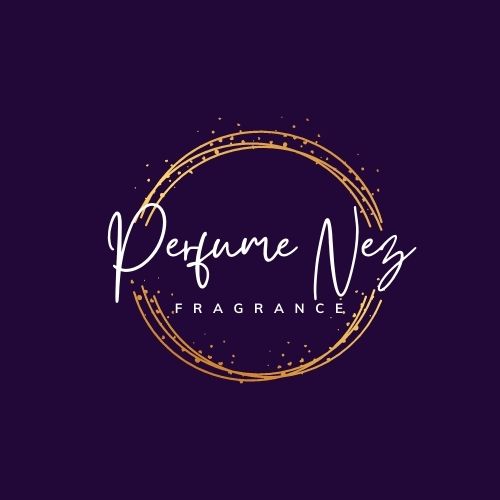How to Become a Perfume Maker
Click For Affordable Inspired Perfume Alternatives
Perfumery is an art that blends science, creativity, and craftsmanship. Whether you dream of launching your own fragrance brand or simply want to explore scent creation as a hobby, becoming a perfume maker requires knowledge, practice, and a keen sense of smell. This guide will walk you through the essential steps to mastering the craft of perfumery.
Understanding the Basics of Perfumery
Before you start creating your own perfumes, it’s crucial to understand the fundamental principles of perfumery.
The Structure of a Perfume
A fragrance is composed of three main layers known as notes:
-
Top notes – The first scents you smell when you apply a perfume, usually fresh and light (e.g., citrus, herbs, and aquatic notes).
-
Middle notes (Heart notes) – The core of the fragrance, which develops after the top notes evaporate. These are typically floral, fruity, or spicy.
-
Base notes – The foundation of the perfume that lingers the longest, often consisting of deep, rich scents like musk, vanilla, and woody notes.
Types of Fragrances
Perfumes come in different concentrations, which affect their longevity and intensity:
-
Parfum (Extrait de Parfum): 20-40% fragrance concentration, longest-lasting.
-
Eau de Parfum (EDP): 15-20% concentration, lasts 4-6 hours.
-
Eau de Toilette (EDT): 5-15% concentration, lighter and more refreshing.
-
Eau de Cologne (EDC): 2-5% concentration, short-lasting, often citrus-based.
Developing Your Sense of Smell
A perfumer, also called a "nose," must have a highly trained sense of smell.
Smelling and Identifying Notes
-
Practice smelling individual essential oils and fragrance materials daily.
-
Try to identify scents in your daily life (e.g., foods, flowers, spices, and cleaning products).
-
Keep a fragrance journal to describe scents and note your observations.
Familiarizing Yourself with the Fragrance Wheel
The Fragrance Wheel, created by Michael Edwards, categorizes perfumes into families:
-
Floral
-
Oriental
-
Woody
-
Fresh
This helps perfumers understand scent relationships and blend complementary ingredients.
Learning About Raw Materials and Ingredients
Perfume-making relies on both natural and synthetic ingredients.
Natural Ingredients
-
Essential oils (e.g., lavender, rose, sandalwood)
-
Absolutes (e.g., jasmine, tuberose, vanilla)
-
Resins (e.g., frankincense, myrrh)
Synthetic Ingredients
-
Used to recreate rare or expensive scents (e.g., musk, ambergris).
-
Often provide consistency and longevity in commercial perfumes.
Acquiring the Right Tools and Materials
To begin perfume making, you’ll need a few essential tools:
Basic Tools
-
Fragrance oils and essential oils
-
Perfumers’ alcohol or carrier oils (jojoba, fractionated coconut oil)
-
Pipettes and droppers for precise measuring
-
Glass beakers and stirring rods
-
Dark glass bottles for storing your perfume
-
Scent strips (blotters) for testing blends
Learning the Science of Perfume Composition
Dilution and Evaporation
Perfume ingredients are diluted to balance intensity. The process involves:
-
Mixing oils with perfumers’ alcohol (for sprays) or carrier oils (for roll-ons).
-
Letting the perfume macerate for at least 48 hours to several weeks for full scent development.
Fixatives in Perfumery
Fixatives help perfumes last longer by slowing down evaporation. Common fixatives include:
-
Natural fixatives (e.g., ambergris, benzoin, myrrh).
-
Synthetic fixatives (e.g., Iso E Super, galaxolide).
Mastering the Art of Blending Scents
Creating a Perfume Formula
-
Select a fragrance family – Decide if you want a floral, woody, fresh, or oriental scent.
-
Choose your top, middle, and base notes – A well-balanced fragrance has elements from all three layers.
-
Start with small experiments – Use a 5-10-15 drop method (e.g., 5 drops top note, 10 drops middle, 15 drops base).
-
Adjust proportions – Fine-tune the blend by increasing or reducing certain notes.
-
Age the blend – Let the mixture rest for at least 48 hours before testing.
Testing and Refining
-
Apply perfume to pulse points to see how it develops on the skin.
-
Let others smell the fragrance to get different perspectives.
-
Make notes of what works and adjust the formula accordingly.
Gaining Professional Training and Certification
While self-study is possible, formal training can refine your skills.
Perfume Schools and Online Courses
-
Grasse Institute of Perfumery (France) – World-renowned perfumery school.
-
ISIPCA (France) – Offers degrees in fragrance science.
-
Experimental Perfume Club (UK) – Hands-on workshops.
-
Online platforms like Udemy, Coursera, and MasterClass – Provide beginner courses.
Creating Your Own Perfume Brand
Developing a Unique Brand Identity
-
Define your niche (luxury, organic, sustainable, celebrity-inspired, etc.).
-
Create a brand story that connects with customers.
Sourcing Ingredients and Packaging
-
Work with reputable suppliers for fragrance oils and packaging.
-
Choose sustainable and aesthetically pleasing packaging.
Legal Considerations
-
Register your business and comply with cosmetic regulations.
-
Obtain safety certifications if selling to the public.
Marketing and Selling Your Perfume
Building an Online Presence
-
Create a professional website with a shop feature.
-
Use social media (Instagram, TikTok, YouTube) to showcase your perfumes.
Selling Through Different Channels
-
Sell on platforms like Etsy, Shopify, and Amazon.
-
Collaborate with boutiques, salons, and department stores.
In Conclusion
Becoming a perfume maker requires dedication, patience, and creativity. By developing your sense of smell, learning about fragrance materials, and experimenting with blending techniques, you can create unique scents. Whether you choose to work as an independent perfumer or launch your own fragrance brand, mastering perfumery is a rewarding journey that blends science with artistry.
Buy Perfumes - Best Online Retailers
Click For Affordable Inspired Perfume Alternatives
Click For The Best Niche Perfumes & Decants
Pheromone Perfumes - Confidence, Attraction & Appeal - Click For More
Home Fragrances & Candle Warmers - Click To Scent Up Your Spaces Today!
